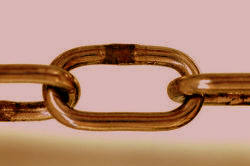Verbs: the essentials

This guide covers the essentials that you need to know. There are links below and at the end to take you to guides which explain the different types of verbs in English in more depth.
For the purposes of this guide, a verb is defined as
a word used to describe an action,
state, or occurrence
So, taking the four pictures above we can construct sentences containing verbs as follows:
- The lake is lovely
describing a state - They have played the sonata
describing an occurrence - She sat bedside her dog
describing an action - She must study for an
examination
describing a state
In these cases, the verbs are performing slightly different functions, as we shall see.
 |
Three sorts of verbsFundamentally in English, and many (but not all) other languages, there are three types of verb. |
- Lexical or main verbs
- Examples: smoke, go, enjoy, imagine, come, decide, think, spin etc.
- Meaning: these verbs carry intrinsic meaning. Even
in isolation, for example, a statement such as
Jump!
can be understood and the verb can be defined. - Form: these verbs alter according to predictable, if
sometimes irregular, patterns.
They often change form to show:- person
I smoke
she smokes - tense
I come
I came
I imagine
I imagined - aspect
I decide
I am deciding
I have decided
- person
- Auxiliary verbs
- Types
- Modal auxiliary verbs, for example:
can, may, might, should, must, could
etc. occurring in, e.g.:
I can see him
She may be late
They might complain
We should go now
I must get the car fixed
We could understand - Primary auxiliary verbs, for example:
have, get, be, do
occurring in, e.g.:
I have spent the money
I got the car fixed
She is writing to him
Do you understand?
- Modal auxiliary verbs, for example:
- Meaning
Auxiliary verbs do not carry meaning alone so, for example:
have
be
get
do
are all meaningless unless we know what the main verb is or we state it.- Modal auxiliary verbs express the speaker / writer's
viewpoint concerning the main verb so, for example:
She must study
expresses the speaker's view of obligation
She might not be at home
expresses the speaker / writer's view of likelihood
and so on. - Primary auxiliary verbs express how the main verb
should be understood in relation time and to other
events so, for example:
John has read the book
expresses two things:
a) the reading of the book is a finished past event and
b) the reading of the book has changed the present in some way so now we can follow it with something like
... and he can tell you what he thinks about it.
Other primary auxiliary verbs can express ongoing actions or states as in
She is still running the company
These verbs also signal question forms as in
Do you want anything else?
passive ideas as in
She was taken to hospital
She got hurt in the accident
Peter had his house decorated
and imperatives as in
Don't take that!
- Modal auxiliary verbs express the speaker / writer's
viewpoint concerning the main verb so, for example:
- Form:
- Many modal auxiliary verbs do not show changes
for person, tense and aspect but some do so we can change,
e.g.:
She can swim well
to
She could swim well
We cannot, however, change must to musted etc.
We can also change form to show person with some modal auxiliary verbs, for example, changing
I have to go
to
He has to go
and we can show some aspects as in, e.g.
She should have finished by now
etc. - Primary auxiliary verbs change form much like
lexical or main verbs although they are all irregular, e.g.:
She had the car fixed
I have got the house painted
They were arrested
Did you get the money?
- Many modal auxiliary verbs do not show changes
for person, tense and aspect but some do so we can change,
e.g.:
- Types
- Copular verbs
- Meaning
These verbs act to link noun subjects to some kind of attribute or make it equivalent to another noun. The archetypal copular verb is be but there are a number of other verbs that act in the same way. For example:
He is a doctor
That seems interesting
They appear tired
That smelt terrible - Form: these verbs alter to show number, tense and aspect
just like main or lexical verbs so we have, e.g.,
She became the Chief Executive
He was getting angry
They seemed a little tired
etc.
- Meaning
 |
Lexical or main verbsThese verbs carry intrinsic meaning |
We can categorise lexical or main verbs in a number of ways. The first two categories are the really crucial ones.
- Intransitive verbs
Some verbs never take an object and can stand alone. We can say, for example,
They came
I responded
etc., and the meaning is clear.
However, for example, we cannot say
*She arrived the hotel
or
*It occurred the rain
because neither of these verbs can refer to a noun directly, i.e., they cannot take an object. We can, and frequently do, insert a preposition to get, e.g.,
She arrived at the hotel
or
It occurred to me
but the verb is still not taking an object in these cases.
Other examples of generally intransitive verbs include
agree, appear, belong, collapse, die, disappear, exist, fall, go, happen, inquire, laugh, live, look, remain, respond, rise, sit, sleep, stand, stay, vanish, wait.
Most of these can be followed by a prepositional phrase such as about the weather, at six o'clock, of hunger and so on but these are not objects of the verb. Technically, they are referred to as complements. - Transitive verbs
Verbs which are always transitive must have an object complement.
For example, we cannot have a sentence such as
*He brought
or
*She sent
because the verbs bring and send must have an object to make any sense. We need to know both who or what did it and what or who it was done to.
Other examples of generally transitive verbs include: buy, cost, get, give, make, owe, pass, show, take, tell.
We can divide transitive verbs into two more categories:- Those transitive verbs which can take only one object.
These are called monotransitive verbs.
For example, we can say
She drank the coffee
but not
*She drank me the coffee.
Other examples of verbs which only take one object when they are transitive include eat, say, play, expect, remember, suspect. - Those transitive verbs that can take two objects. These
are verbs which are ditransitive. For
example, we can say
He bought the drinks
and that's a verb with a single object (the drinks) but we can also say
He bought us the drinks
and here we have two objects, the drinks (the direct object) and us (the indirect object).
Another example is
They sold me the car
which has a direct object (the car) and an indirect object (me).
We can also change the order and put the indirect object at the end but then we have to insert a preposition:
He bought the drinks for us
They sold the car to me
Other examples of verbs which can or even must be ditransitive include
allow, appoint, ask, assure, award, bake, bet, bring, buy, call, cause, charge, cook, cost, cut, deal, do, draw, feed, find, get, give, hand, lend, make, offer, order, owe, pass, pay, promise, read, save, sell, send, show, teach, tell, throw, wish, write
A fuller list with examples, is available as a PDF document via the link at the end in the list of related guides.
In English, the indirect object comes before the direct object but that is not always the case in other languages.
- Those transitive verbs which can take only one object.
These are called monotransitive verbs.
For example, we can say
- Verbs which can be both transitive and intransitive
These verbs, and there are lots of them, can be both.
For example, we can say
She eats (intransitive)
and
She eats fish (transitive).
Other examples in this category include
drink, explain, help, decide, fly, smoke, swim, play, continue.
 |
Transitive-intransitive pairings |
There are a few verbs in English which derive from the same root but have transitive and intransitive variants. For example, both rise and raise derive from the same source (the Old English ræran, rear) but the first is intransitive and the second transitive. The others are lie / lay and sit / set so we get, for example:
- He rose early (intransitive)
and
He raised the question (transitive) - They are lying on the beach (intransitive)
and
They are laying the foundations (transitive) - He sat near the table (intransitive)
and
He set it near the table (transitive)
Other pairs of verbs which are unrelated in terms of origin also form intransitive-transitive couples. In English, for example:
- fall is intransitive but drop is
usually transitive:
The ball fell
vs.
She dropped the ball - speak is usually intransitive but tell is
transitive (often ditransitive):
He spoke at the meeting
vs.
He told me the truth - die is intransitive but kill is transitive
He died in 1940
vs.
She killed him in 1940
Some other verbs take on slightly (or radically) different meaning when used transitively or intransitively. For example
- He ran across the garden (intransitive)
and
He ran a good business (transitive) - I can manage alone (intransitive)
and
He managed the school (transitive) - The plane flew (intransitive)
vs.
He flew the plane (transitive) - She called at 6 (intransitive)
and
She called her friends (monotransitive)
or
She called me an idiot (ditransitive)
 |
Finite and non-finite verb use |
You may well have heard of the term infinitive to describe the
highlighted verbs
in these sentences:
I want to
help
She must not go
They are called, respectively the to-infinitive and the
bare infinitive (or infinitive without to, somewhat
clumsily). The reason is that they are not finite. In
other words, they have no mark on them for tense or person.
Non-finite verb forms are not marked for time (tense) or for the
nature of the subject (person). There are three main sorts of
non-finite verb forms:
- gerunds (i.e., verbs which behave grammatically in a
noun-like way). For example:
I enjoy walking
They are not actually just simple nouns in most cases because they cannot take plurals and are treated as singular forms. Some are really very noun-like however as in:
The furnishings were lovely
(and we refer to these as verbal nouns). - infinitives of two sorts:
- bare infinitives as in, e.g.:
Let her come
She might object - to-infinitives as in, e.g.:
I want to help
She used to be so happy
- bare infinitives as in, e.g.:
- participles of two sorts;
- present participles as in, e.g.:
On arriving, I saw the party had nearly finished
Smiling, she welcomed him in - past participles as in, e.g.:
Broken, the hammer was no use
The aria was beautifully sung
- present participles as in, e.g.:
Finite verb forms, on the other hand, are marked for tense and
person so we get, for example:
Mary left early
where we can tell from the form of the verb that it is past tense
and
Peter enjoys opera
where we can tell from the form of the verb that it is third-person
singular (the -s inflexion at the end of the verb).
There are, however, two problems:
 |
Problem 1 |
English is a language which has very few inflexions compared with
heavily inflected languages like German, French, Spanish and Greek.
So, for example, we have:
John left
I left
We left
They left
You left
etc. and the form of the verb, while marked for tense, remains
unchanged for person.
Some verbs do not even do that so the past forms of, e.g., put,
set, burst, cost, cut etc. look exactly the same as the present
tense and the base forms.
We also have:
I like opera
You like opera
He likes opera
We like opera
They like opera
in which only the third person singular form is marked for person
and all the other verb forms look the same.
We get around this problem by suggesting that there is marking for tense and person but in many cases it is zero marking and we represent it like this: Ø-marked.
 |
Problem 2 |
Finite and non-finite forms can combine to make finite forms in
English.
Because the language relies heavily on auxiliary verbs, this is a
very frequent occurrence in English. All the following are
finite forms but they contain non-finite forms. The non-finite
forms are highlighted
in black and the finite forms
in red.
She has
left
They are
leaving
We have
left
She had
left
She will
leave
They are
going
to leave
Mary ought
to leave
Mary can
leave
It is important, therefore to distinguish between a finite verb phrase (all of the above) and a finite verb form (only the parts in red).
 |
Other languages and teachingOther people's languages do things differently. |
While the
essential distinction between transitive and intransitive verb use
is common across languages, the actual verbs in question will vary.
A verb that is intransitive in English may well be transitive in another
language and vice versa.
In English, the verbs wash and meet can be used
intransitively as well as transitively:
- They washed the car (transitive)
vs.
They washed and then went out (intransitive) - We met the manager (transitive)
vs.
We met on Thursday (intransitive)
In other languages, these two verbs can only be transitive so the
reflexive pronoun is inserted giving a translation like
The
washed themselves
We met us
This can, of course, lead
to error.
Some languages, such as Japanese, have large sets of pairs of verbs
with slightly different forms, the one transitive, the other
intransitive.
It is, therefore, very
important that we teach the verb's grammar along with its meaning. If we don't, we
invite error such as
*She died him
*He killed in 1940
*I
laughed the film
*She smiled him
*I assured
*He explained me it
*I complained the manager
etc. and all of these are possible in some languages.
If you would like to see if you have understood this section, try this test.
Summary

For more about this section, go to the guide to lexical or main verbs, linked below.
 |
Auxiliary verbsThese are sometimes called 'helping verbs' |
Auxiliary verbs cannot stand alone and retain their meaning
unless the lexical or main verb they refer to is understood. For
example
I might
means nothing on its own but
I might
go
carries real meaning. The auxiliary verb might
expresses the speaker's sense of likelihood. It is possible to
say
I might
in response to
Are you going to the
meeting?
but here the lexical or main verb go is
understood by both speaker and hearer.
There are, fundamentally, two sorts of auxiliary verb.
- Primary auxiliary verbs
These form tenses, voice or aspects with lexical or main verbs. Traditionally, they are restricted to the three verbs be, have and do but many (including this site) add get to the list.
For example- We can alter the tense (and sense) of I work by
using the auxiliary have in, e.g.,
I have worked hard. - We can change how the speaker wants to communicate his
or her view of an event by changing the aspect of I work
by using the auxiliary be in
I am working. - We can change the emphasis of what we say also by using
the auxiliary be, changing, e.g.
I broke the window
to
The window was broken by me. - We can change the sense of who did what by using the
auxiliary get in
I got John to repair the car.
or the auxiliary have as in
I had the car repaired at the garage - We can form negatives and questions by using the verb
do as in
Do you want to come?
or
I don't see the problem.
There is also an essential guide to voice which explains the passive-active distinction. - We can alter the tense (and sense) of I work by
using the auxiliary have in, e.g.,
- Modal auxiliary verbs
These alter the hearer's perception of how the speaker understands the situation.
For example- We can express obligation by using the
modal auxiliary have to, changing
I think
to
I have to think
or
I left
to
I had to leave. - We can express our view of likelihood
by inserting a modal auxiliary into
They arrive
and making
They might / should / must arrive soon. - We can give or withhold permission by
using a range of modal auxiliary verbs by changing
You go
to
You may go
or
You can't go.
- We can express obligation by using the
modal auxiliary have to, changing
The most common list of modal auxiliary verbs is: can, may, shall, will, could, might, should, would, must, ought to, used, need and dare.
Modal auxiliary verbs are traditionally divided into pure or central modal auxiliary verbs, semi-modal auxiliary verbs and marginal modal auxiliary verbs. Central modal auxiliary verbs include can, must, will etc., semi-modal auxiliary verbs include need to, dare to and used to and marginal modal auxiliary verbs are forms such as going to, be about to, tend to, be likely to etc.
The central modal auxiliary verbs are sometimes described as defective because they don't exhibit the full range of forms in the way that lexical or main verbs do. For example, must has no past tense (we can't say *musted), we don't form questions with do (so we can't say *Do you can?) and we don't add an -s in the third person (so we don't get *She mights).
Modal auxiliary verbs perform a large range of functions in English. If you want to know more, a good place to start is the essential guide to modality, linked below.
Summary:

 |
Copular verbsThese are sometimes called 'linking verbs' |
These verbs serve to link the subject of a sentence directly to its function or its characteristics. There is a list in the guide to copular verbs on this site, linked below. Briefly, however, copular verbs perform two functions:
- They link a subject to another noun or noun phrase and tell us that they refer
to the same thing.
For example: in
Mary is a teacher
or
Mary became a teacher
or
Mary looks like a teacher
we know that Mary and a teacher refer to the same person. - They link the subject to its characteristic.
For example: in
Mary appears angry
Mary became angry
and
Mary is angry
we know that we are dealing with an angry Mary.
Verbs like be, become and end up often
function in both categories:
He became angry
vs.
He
became a teacher
She
was unhappy
vs.
She
was an engineer.
Verbs of perception usually only function in the second category
and are followed by an adjective:
It looks awful
It
smells
sweet
It sounds horrible
They
appeared drunk
She
seemed unwell
etc.
Many copular verbs also function as lexical or main verbs in other
circumstances:
She appears
happy (copula use)
vs.
She appeared at the door
(intransitive lexical use with a prepositional phrase).
A copular verb can,
therefore, only be defined by what it does, not what it looks like.
Summary of verb types
This excludes a lot of detail.

| Related guides | |
| word class map | this link takes you to the index of guides to word classes on this site |
| verb types and clause structures | for a much more advanced guide to the area |
| copular verbs | an essential guide to these |
| modality | the essential guide |
| what verbs do | for a functional analysis of the nature of verbs |
| primary auxiliaries | for a run-down of the main primary (i.e., tense-forming) auxiliary verbs |
| voice: the essential | for a guide explaining the distinction and forms of the passive and active voice |
| lexical or main verbs | for a guide to the meaning-carrying verbs in English |
| ditransitive verbs | a list of the commonest ones with a few notes |
Try a last test on all of this.
